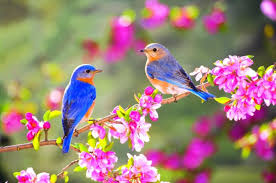Lungo local tour Ethiopia
Summary: bird watching
Duration: 17 days 16 night

Day 01.
Arrive at Bole International Airport. And lungo local tour Ethiopia Tours representative will meet you and take you Ghion or Extreme Hotel in Addis Abba.

Day 02.
An early start and we drive across Mt. Entoto Forest to the Sululta plain with short grass and wetland habitat looking for unique birds such as Blue-winged Goose, Wattled Ibis, Ethiopian Black-headed Siskin, Ethiopian Cisticola, White-collared Pigeon and Yellow-billed Duck. Debrelibanos escarpment is adjacent to matured woodland holding Banded Barbet, White-cheeked Turaco and Ethiopian Oriole. Nearby Jemmu cliff edges attract Ruppell’s Black Chat, White-winged Cliff-Chat and birds of prey including Lammergeyer, Vareaux’s Eagle, Tawny Eagle, Egyptian Vulture and Fan-tailed Raven. Scrub lures Erckel’s Francolin, Shrikes and Sunbirds. The endemic troop of the Ghelada Baboon can be spotted there.
Overnight at Etho-German Lodge.

Day 03.
Today we drive to the Jemmu Valley in search of the rare Harwood’s Francolin and Abyssinian Black Wheatear. The road climbs steeply through highland fields and traditional villages. The cliffs and boulder-strewn slopes of the Jemmu Valley may have flocks of White-billed Starlings, the extremely rare Salvadori’s Serin, Singing Cisticola, Isabelline Shrike and Abyssinian Black Wheatear. In the afternoon, we drive to Debrebirhan town while enjoying another sector of plain grassland birds including Erlanger’s Lark, Pectoral-patch Cisticola and Ortolan Bunting.
Overnight at Eva Hotel.

Day 04.
An early start to explore the road to Debresina Escarpment. Our main interest is to find the rarest endemic Ankober Serin feeding in the highland tussock grass fields. In the lower fields, we can expect Yellow-crowned Canary, Brown-rumped and Streaky Seed-eater. Overhead we may locate Saker Falcon, Augur Buzzard and Alpine Swifts. We then continue driving to the Crater Lakes around Bushoftu/Debrezeit. With significant numbers of Cranes and Marabou storks Chalalaka is an important shallow fresh water seasonal lake and feeding ground for migratory and resident waders. Lake Hora is where you can spot Malachite Kingfisher, Paradise Flycatcher, Black-billed Barbet Little Bee-eater Little Grebe and Cormorants.
The area named after the crater lake Bushoftu, meaning “Smelling Water” support large numbers of Weavers, Seed-eaters, Thrushes, Doves, Sunbirds and Finches in the adjoining sedges and thickets
Overnight at Dream Land Hotel.

Day 05.
Today we drive east towards the Great Rift Valley via Bushoftu Crate Lakes and Nazaret town to visit Awash Park with its volcano landscapes and savannah grassland habitat for a variety of bird species. On the way we detour to Lake Basaka’s saline water which is good habitat for water birds such as Flamingoes, Pelicans, Storks, Herons, Plovers, Lapwings, Sandpipers and Stints.
Overnight Genet Hotel at Awash Town.

Day 06.
Today we drive the Gotu HQs track running through acacia thickets looking for Buff-crested Bustard, Crowned Lapwing, White-browed Scrub-robin, Fork-tailed Drongo, Crested Francolin, Red-winged Lark, Rosy-patched Shrike, Weavers, Waxbills and more. The prominent Awash River water falls and riverine vegetation supports Woodland Kingfisher, Red-belied Parrot, Bruce’s Green Pigeon, Eastern Grey Plantain-eater, White-bellied Go-Away-Bird, Nubian Woodpecker and at dusk we may find Star-spotted Nightjar. Birds of Ilala Sala plain include Kori Bustard, Swallow-tailed Kite, Gillett’s Lark, Ashy Cisticola and Somali Fiscal. Awash Park is also shelter to Oryx, Soemmerring’s Gazelle, Hammadryas and Olive Baboon, Dick-dick, Lesser Kudu and Warthog.
Overnight Genet Hotel.

Day 07.
Today we drive to Sodore famed for its spa with a detour to Sabober Plain looking for Superb Starling, Cyprus and Pied Wheatear and Black-headed Lapwing.
Mt. Fentale dominates the landscape and semi-dormant volcanoes created a habitat of lava flows and deep fissures. Typical birds here are Sombre Chat, Blackstart, Yellow-throated Serin, White-headed and Red-billed Buffalo Weavers. Open areas have Claperton’s Francolin, Pygmy Kingfisher, Black-crowned Tchagra, Black-winged Lovebird and Red-billed Firefinches.
Overnight Sodore Resort or Rift Valley Hotel at Nazareth.

Day 08.
Passing through farmland used for cereal production and livestock grazing our destination is the town of Goba located in the highland of the Bale Mountains. The northern part of Bale Mountains is important for the endemic Mountain Nyala, Menelik’s Bushbuck, Bohor Reedbuck, Grey Duiker and Warthog. Birds of prey can be numerous including Eastern Imperial Eagle, Lanner Falcon, Kestrel and Golden Eagle. Grass verges attract White-collared Pigeon, Somali Crow, Erlanger’s Lark, Botta’s Wheatear and Alpine Chat.
Overnight Wabeshebele Hotel at Goba Town.

Day 09.
Beyond Goba are extensive stands of Juniper and Hagenia Abyssinica forest, home to Abyssinian Catbird, Abyssinian Slaty-flycatcher, Woodland Warbler and Olive Pigeon. Lammergeyer, Golden Eagle, Augur Buzzard and Peregrine Falcon occupy upper escarpment. The Bale Mountains plateau crater lakes attracts remnant population of Wattled Crane and Ruddy Shelduck.
The objective of today is to find and study the rare endemic Ethiopian Wolf hunting for Giant Molerat on the Sanatte Plateau, where Giant Lobelia perennial plants grows as tall as 8 meters during the flowering season.
Overnight Wabeshebel Hotel.

Day 10.
Sof Omar Caves on the eastern edge of Bale Mountains may be the worlds most spectacular and extensive underground system carved by the Weib River into the limestone that line it. Time has carved out ornate and immense pillars, domes and chambers. The river flows through the caves year-round, but lower in the dry season. During one’s passage through the caves, we have to cross the river seven times in the 1.5km underground system. It is an interesting shrine and pilgrimage place for Muslims. The roof of the caves is home to thousands of Bats and the floor is covered with droppings accumulating over many years. The Weib river gorge and cliffs habitat support the endemic Salvadori’s Seedeater, Bristle-crowned Starling, Swifts and Swallows.
Overnight at Wabeshebele Hotel.

Day 11.
Today we drive through Ethiopia’s moist tropical forest in the southern part of the Park, covered with clouds most of the year, and known as the Harena forest. Arriving in the remote town of Nehgele through Genale river basin, the woodland and thickets adjacent to it holds the spectacular African White-winged Dove, Juba Weaver, Somali Bunting, Pringle’s Puffback and Pygmy Batis. Flowering shrubs attracts Hunter’s and Marico Sunbird.
Overnight Green Hotel at Neghele Town.

Day 12.
At dawn we drive to Hara-kalo and Wadera dry river valleys to explore the rare and striking birds called Ruspoli’s Turaco.
In the afternoon, excursion to the large grassland of Liben Plain, looking for birds of the dry-open country. The endemic Sidamo Lark, Tiny Cisticola, Themink’s Courser, Rufous Short-Toed Lark and Crowned Lapwing are some to mention.
Overnight Green Hotel.
“Vulturine Guineafowl around Yabello areas” © Brendan Sloan

Day 13.
Birding en route we drive to the town of Yabello. It is an important junction town in the middle of a red sandstone landscape with many large termite mounds. This mosaic arid land is home to several spectacular birds notably the charismatic Stresemann’s Bush-Crow, White-tailed Swallow, Golden-breasted Starling, Vulturine Guineafowl, and White-crowned Starlings.
Overnight at Yabello Motel.

Day 14.
Today we explore the road to Mega and Dubluk with its mixed vegetation that attracts Pygmy Falcon, Slate-colored Boubou, Bare-eyed Thrush, Purple Grenadier, Black-capped and Grey-capped Social Weaver. Birds of prey are numerous including Eastern Chanting Goshawk, Gabar Goshawk, Amur Falcon, Wahlberg’s Eagle and White-headed Vultures.
In the afternoon we will bird Yabello Forest Sanctuary looking for Northern Black Flycatcher, White-cheeked Turaco, Tawny Wagtail, Bare-faced Go-Away-Bird and many more.
Overnight at Yabello Motel.

Day 15.
Birding en route we drive to Lake Awassa important to water and shorebirds. On arrival we search for Spotted Creeper, Blue-headed Coucal, Dusky Flycatcher, Fiscal and numbers of Marabou Storks and White Pelicans.
Overnight Wabeshebele Hotel.

Day 16.
Early morning walk along the bank of Lake Awassa looking for African Pygmy Goose, Black Crake, Greater White and Intermediate Egret, Pelicans and Sedge Warblers. Our walk ends at the traditional fish market, where birds of prey feed on fish left-over.
After breakfast we drive to the Wendogenet spa with birding en route. On arrival we search the grounds for Silvery-cheeked Hornbill, Variable Sunbird and Abyssinian Woodpecker.
Overnight Wendogenet Hotel.

Day 17.
Before breakfast we walk along the springs and hillside to search for Half-Collared Kingfisher, Yellow Fronted Parrot, Mountain Wagtail, Double-toothed Barbet, Narinna Trogon, Black Saw-wing and birds of prey including African Harrier Hawk, Steppe Buzzard and Crowned Eagle.
After breakfast we drive to Lake Langano and Abiata breeding and roosting grounds for Pelicans and Flamingos. It is also excellent for migratory waders from Europe and Asia and we Leaving after a late lunch we arrive in Addis late afternoon and we will have a farewell dinner before departing for the airport.

My name is lungo (afework bezabhi)
For the above tour price detail:-
Contact lungo right now
AFEWORK BEZABHI (LUNGO)
Web: – www.localtourethiopia.com
e-mail:-lungo.adiss@gmail.com
Skype:-lungo local tour Ethiopia
WATS up:-lungo local tour Ethiopia
Mable: (+251913413740
Face book, linkidin, flikir, youtube, google+Twitter:-lungo local tour Ethiopia
A380 TOUR OPERATOR AND LOCAL GUIDE
Tour Operations Head:-lungo local tour Ethiopia & Tours Services Plc. (founded by Netherlands and run by Lungo from Addis Ababa, Ethiopia) Bole Road Kirkos Sub city, Kebele 01/18, House No 198
AFEWORK BEZABHI (LUNGO) Based on Omo valley & Addis Ababa, ETHIOPIAparture if needed


